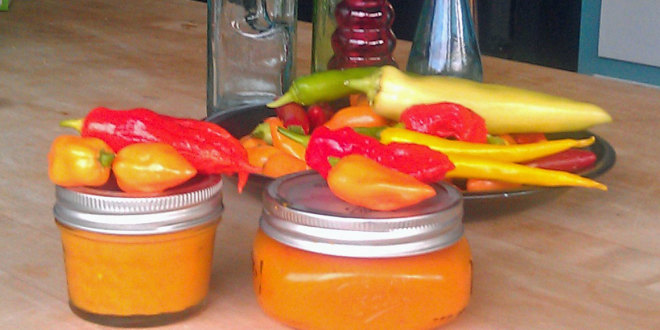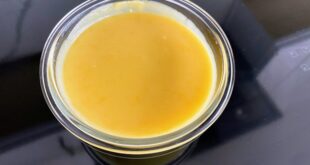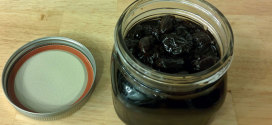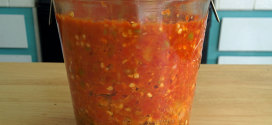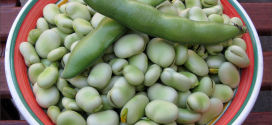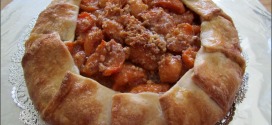This hot sauce is not for the faint of heat. This is a variation of a recipe I first saw on the Rick Bayless show “Mexico – One Plate at a Time”. It has habaneros, carrots, onion, garlic, salt, and then either lime juice or apple cider vinegar.
Ingredients
- chopped Habanero chiles, about 12 chiles (equal to 5 ounces by weight or 1 cup by volume
- chopped onion, from 1/2 cup to 1 cup
- garlic, 3 to 5 cloves
- 2 teaspoons sea salt
- 1 cup apple cider vinegar or lime juice
The amount of onion is up to you. Also the type of onion is up to you (white or a sweet vidalia is fine).
The vinegar or lime juice is for acidity. I have tried this recipe both ways and they are both fine.
Instructions
In a small saucepan, combine the carrot, onion and habanero chiles with the vinegar and 1 cup water. Partially cover and simmer over medium-low heat until the carrots are thoroughly tender, about 10 minutes. Pour into a blender jar, add the roasted garlic, salt and sugar. Blend until smooth. Thin with a little additional water if you think your hot sauce is too thick. Taste and season with additional salt if you think necessary.
Pour into jars or bottles and store in the refrigerator (or process in a water bath as I do).
Sanitize before Canning
Wash- hot soapy water
Rinse- use fresh hot running water. Don’t use a sink or pot full of water for rinse water. After the first couple items are put into the rinse water, the rinse water gets too much soap in it and then it’s not actually rinsing the soap off the following items.
Heat Sanitizing- This method works good for sanitizing bottles, obviously not appropriate for plastic utensils or caps. If using new bottles, rinse the bottles to remove any dust, then put the bottles in the oven at 200F. It’s hard to say how long to keep the bottles in the oven, but the point is to get all the bottles up to 200F or more. Usually 30 minutes is good enough, but if the bottles are stacked up you may want to check the bottles in the middle of the pile to make sure they are hot. This step can be done ahead of time. Then just turn the oven off and leave the bottles in there until it’s time to process, or remove the bottles and cover to keep clean. It’s convenient to put bottles in a roasting/baking pan for easy handling.
One Other Note for washing equipment- after wash/rinse/sanitize…air-dry the dishes. Do not use a towel to dry the items.
Canning
Boiling Water Bath- This process is sometimes used for preserving sauces. The cooked, heated sauce is put into canning jars and fitted with metal lids and rings. The jars are immersed in water in a large pot or kettle. The jars should be sitting on a metal rack to keep them up off the bottom of the kettle. The kettle is brought up to a full rolling boil and kept at a full rolling boil for 15 minutes minimum, depending on the jar size. The jars are then removed from the kettle and allowed to cool. Check for proper seal on lids when cool.
Here is the Ball canning website with more detailed instructions on both the pressure canning and BWB processes. http://www.freshpres…g.com/home.aspx
Pressure canning- this is the least used process for most home sauce makers It requires a pressure canner and canning jars with metal lids and rings. Manufacturer’s recommendations should be followed when pressure canning. It is an excellent method of food preservation, but is a little more involved.
